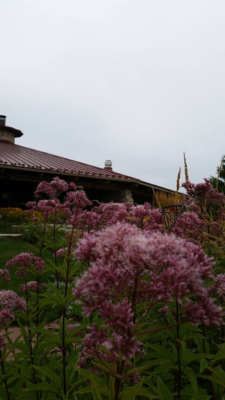 Where are they now? We at Crossroads were quite vocal about spring peepers last spring when they were being quite vocal. In fact, we made them the “poster amphibians” for the kick off of our parking lot project fund drive and were able to raise almost $60,000 (about a quarter of the total cost of the expansion) during the few short weeks that the peepers were peeping.
Where are they now? We at Crossroads were quite vocal about spring peepers last spring when they were being quite vocal. In fact, we made them the “poster amphibians” for the kick off of our parking lot project fund drive and were able to raise almost $60,000 (about a quarter of the total cost of the expansion) during the few short weeks that the peepers were peeping.The peepers are still at Crossroads, but this time of year they are quiet. They leaf the ponds to hunt in our moist forests, and although they have large toe pads that act like suction cups, and are able to climb trees, they spend most of the summer in low vegetation. After a rain, we find them popping like popcorn on the forest floor, but most often, they hunt as night, probably because at night, there is more moisture in the air.
Throughout the summer, the frogs search their tiny territories (scientists estimate their home ranges to be about five meters in diameter) for for insects, spiders and mites. They are good little exterminators of forest pests.
By late summer, we should start finding them in the pond areas around the Collins Learning Center, feeding on insects found on goldenrod, bonset and joe-pye-weed.
We made a big deal about planning for a parking lot which would project the water quality of ponds in which the tiny frogs breed, but to survive, creatures must have their needs met throughout the year. Consequently, we are thinking about the plantings we will add to the areas around the lot.
Obviously, we want native plants which we know will thrive in our area, and also and importantly, are host plants to the insects which feed our frogs, and birds, and even small mammals. And those would be plants such as native goldenrod, bonset, and joe-pye-weed.
The curious thing is that in looking out for one native species, we are probably helping many plants and animals. We hope so.

